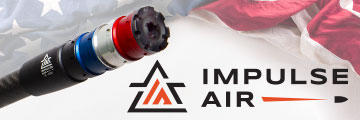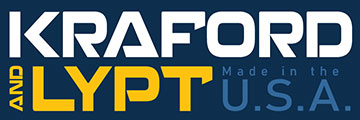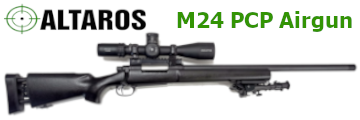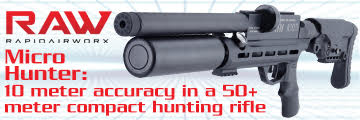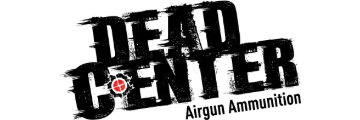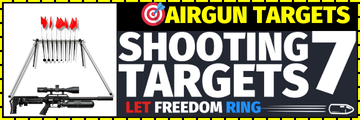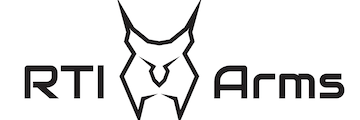Standardizing Moderator Testing in the Airgun World Oldspook
16 Sept. 2022
Introduction: The genesis of a significant number of silencer manufacturers specializing in products intended for the airgun market over the last decade has created a need for a standardized testing method. This paper is intended to define one such method.
Orientation: There are a number of problems which should be addressed when attempting to measure silencer efficiency on a standardized scale, not the least of which is the cost of high quality testing equipment. Some will say you can't get meaningful measurements without specialized equipment costing hundreds or thousands of dollars. To those people I say, “research ballistic pendulums”. To anyone interested in comparing one moderator to another I say, “You can do that with enough accuracy to inform your choices and have some fun while you are at it.” Information you glean will be comparable to others on a larger scale and even if the “nay sayers” tell you your information is not accurate you can reply, “It is more accurate than no information at all.” Seriously though, you will be able to make reliable comparisons and your data will be valuable to those of us who are engaged in similar pursuits.
Equipment: Well you are going to need an air rifle or air pistol. You will benefit from the use of a chronograph but one is not required. You will need a cell phone with a dB meter application or better still an actual dB meter. I use my phone and this application:
https://play.google.com/store/apps/details?id=com.splendapps.decibel It works just fine (EDIT: MAR 23; with the caveat that very short duration noises may not be captured). You will need a place quiet enough to do your testing. Anywhere with an ambient noise level of about 60 dB will do just fine. I have never tested a moderator, even on a sub-twelve foot pound PCP that was quieter than 66 dB (on a DRY day) so a noise floor of 60 dB is far more than adequate.
Setup: To create a standardized test we need a standardized setup. Most people don't have easy access to an indoor range. The good news is you don't need access to one. This method isn't going to define what application you should use or what phone or equipment you should use. Such rules are too restricting in a practical environment. We are not lab rats (well I might be) but most of us are shooters wanting to learn more not scientists conducting a million dollar government study. You should use whatever device you elect to use to make your measurements. We will control the things which are easiest to control.
Measurements should be taken at a standardized location relative to the muzzle. I strongly recommend you place your sensor fifteen feet from the muzzle of your airgun and on a line perpendicular to the direction of fire. There are a couple of reasons for that suggestion. The first reason is safety. You have to walk to the meter after each shot and read what it says. You should not be walking down range to do that. The second reason I suggest that location has to do with the purpose of the moderator. Most shooters moderate their airguns to keep from upsetting their neighbors. Neighbors are generally not down range. If they are you wouldn't be shooting. So fifteen feet from the muzzle at 3 o'clock or 9 o'clock seems like a good place. The microphone on your device should be pointed directly at the airgun. Why? The direct pulse of firing will arrive at the microphone first and will be louder than reflections with this setup barring some rather unusual geometries. But why 15 feet? Fifteen feet because that is a large enough distance to give us the ability to calculate other information as I have shown in a different post. If you are too close it is hard to extrapolate the "detectable" range and if you are too far it is hard to get a good sound reading. That's your setup. It is pretty straight forward.
Method: When testing PCPs you should try to keep your shots at the same regulator setting on a regulated rifle and close to the same shot number in the shot string for an unregulated rifle. Spring rifles and other platforms will be inherently similar so long as you are shooting the same ammunition for the entire test cycle. The more data points you get the more accurate the statistics based upon your data will be. You need first to
establish your baseline. You must do this every time you conduct a test because conditions change. Your baseline is the average of three or more shots from the airgun under test with no moderator attached. If the rifle is a shrouded rifle, the baseline is established with the rifle as it was delivered from the vendor. In other words, don't take your shroud off the rifle, unless you just like the pain. In the end you are going to report information about your rifle anyway. So you shoot three shots with no moderator and write that data down. Then you average that data. At that point you start testing the moderator(s). Shoot the same number of shots with each moderator that you shot to establish your baseline. Average those numbers for each moderator. The averages are all that matter for our purposes.
Interpreting your results (dB/CC): We need something simple that will help us to evaluate the relative efficiency of one moderator over another. So I hereby declare the standard measurement of silencer efficiency to be decibels per cubic centimeter. How do you calculate that? Measure the length of your moderator and the diameter, do it in millimeters it makes the math easier. There are any number of applications on the web which can be used to calculate the volume of a cylinder. Find one. Use it. Once you know the volume of your moderator in cubic centimeters, you divide that number into the difference between your unmoderated airgun and your moderated airgun.
Or you can make a spread sheet that does that math. Like the one attached. This is for a test I did this afternoon. I am very proud of the moderator I modified for my Stormrider.
I hope the community finds this concept useful. It would be nice to have a number which rates a moderator in comparison to other moderators.
NOTE:
Humidity and temperature will change sound propagation. That is why you need to identify a standard moderator and always establish a baseline with it EVERY time you test. Today I tested my "standard" moderator against itself. It was a very humid day today. I have been doing my testing in dry months. My "standard" moderator tested an average of 3 dB louder today than it has tested on dry days. So did every other moderator I tested today. So there is a bit of anecdotal information which might be worth having, moderators work better on dry days. MORE HERE View attachment dB-per-CC.xls View attachment 290298 

























